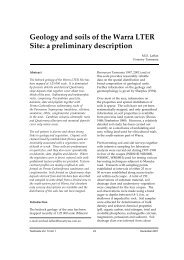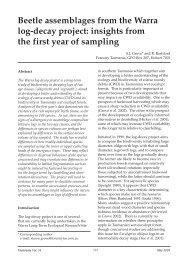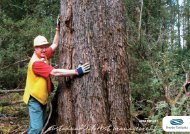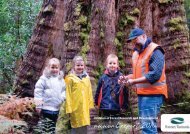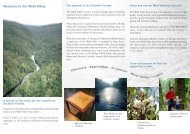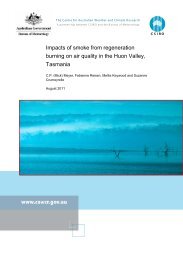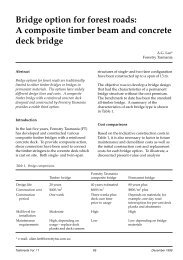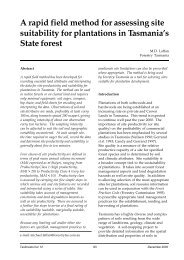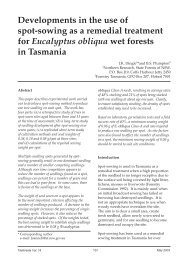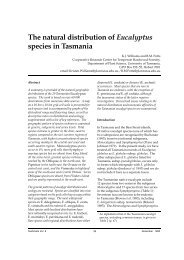Professor Ivan Tomaselli Report - Forestry Tasmania
Professor Ivan Tomaselli Report - Forestry Tasmania
Professor Ivan Tomaselli Report - Forestry Tasmania
Create successful ePaper yourself
Turn your PDF publications into a flip-book with our unique Google optimized e-Paper software.
The comparison between adopting a shorter rotation for regrowth forests and<br />
plantations should not be based only on financial and economic terms. Other issues<br />
such as differences in wood properties, market implications, environmental impacts<br />
and public perception are also of outstanding importance.<br />
5- FOREST PLANTATIONS<br />
The adoption of a shorter rotation for regrowth forest does not exclude the possibility of<br />
investments in plantations. Plantations will be important to produce low cost fiber and also<br />
lower cost solid wood logs for certain uses. This is a worldwide trend that can not be<br />
neglected in dealing with investments in forests. <strong>Forestry</strong> <strong>Tasmania</strong> should consider<br />
possibilities to invest in alternative plantation management options.<br />
One option to be considered is to focus on plantations that maximize solid wood log<br />
production. Experience gained in other countries in dealing with eucalyptus plantations<br />
indicate that using less trees per hectare (as few as 500), and intensive management can<br />
reduce the rotation and increase average diameter of the trees, producing logs of higher<br />
value. Even if stand volume is reduced, this results in positive impacts on the economic<br />
returns.<br />
Wood produced in intensively managed fast growing plantations has a lower density, but<br />
pruned logs from these plantations has been found to be a good alternative for the<br />
production of plywood, mouldings, furniture components and other value added products.<br />
6- BIOFUELS IN HARVESTING AREAS<br />
As previously discussed, biomass for energy generation is an alternative that should be<br />
further studied. Large volumes are left in coupes when harvesting old growth forests, but<br />
volumes are also significant when thinning regrowth forests areas. As a matter of fact this<br />
issue has been under discussion for quite a long time, and significant amount of information<br />
on the impacts of increasing the removals is available in the CSIRO report submitted to<br />
<strong>Forestry</strong> <strong>Tasmania</strong> in May 2002.<br />
The CSIRO report confirms the observations made by the consultant on the volume<br />
available at the harvesting areas. The report has a strong focus on old growth forests and<br />
the potential risks associated with impacts on soil and biodiversity. Particular attention was<br />
given, for example, on the role of coarse woody debris.<br />
It seems to be important to revisit the issue, and consider implications in a broader<br />
perspective (as earlier suggested in this report) and covering in more detail the financial and<br />
economic aspects and their implications on forest operations.<br />
For instance, the volume of biomass left on the ground when harvesting old growth forests<br />
is significant, but the area harvested annually in this type of forest is relatively small and<br />
will tend to decrease in the future. Investing in energy generation based on biomass is a<br />
long term investment and therefore it is important to ensure that supply will be maintained<br />
11 1




